LaToya Ruby Frazier
Monuments of Solidarity
12 May - 07 Sep 2024
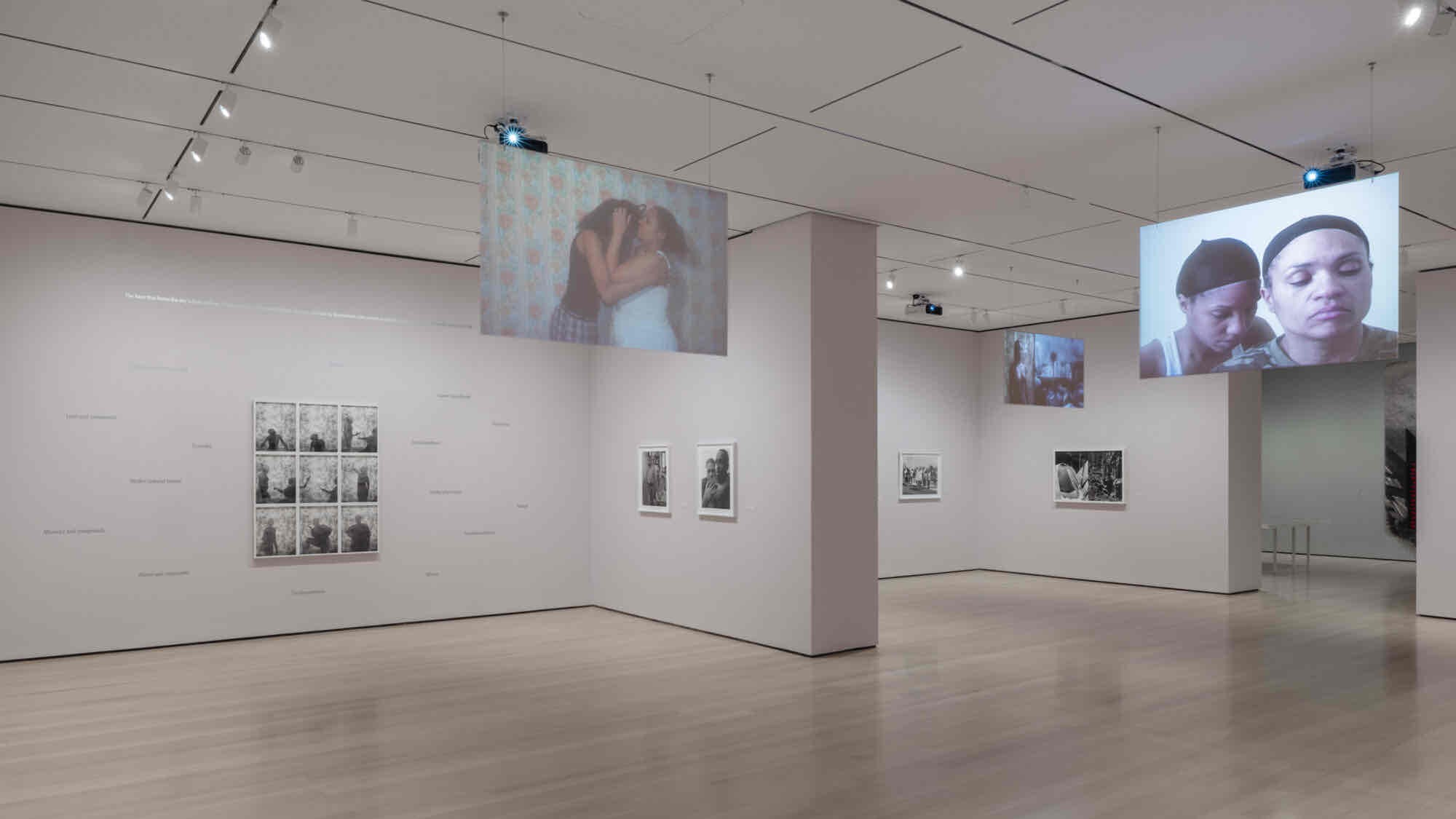
Installation view of LaToya Ruby Frazier: Monuments of Solidarity, on view at The Museum of Modern Art, New York from May 12 through September 7, 2024. Photo: Jonathan Dorado.
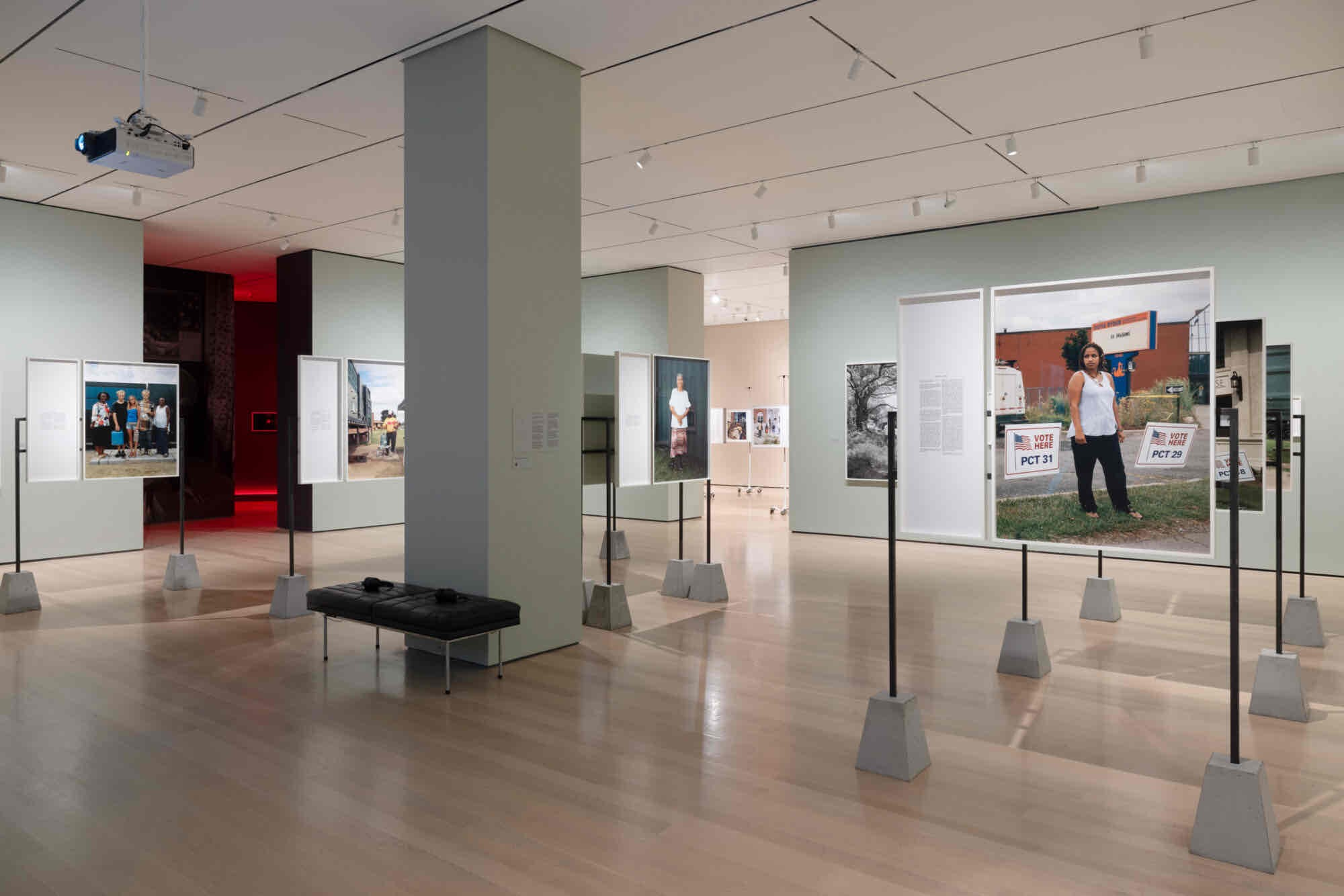
Installation view of LaToya Ruby Frazier: Monuments of Solidarity, on view at The Museum of Modern Art, New York from May 12 through September 7, 2024. Photo: Jonathan Dorado.
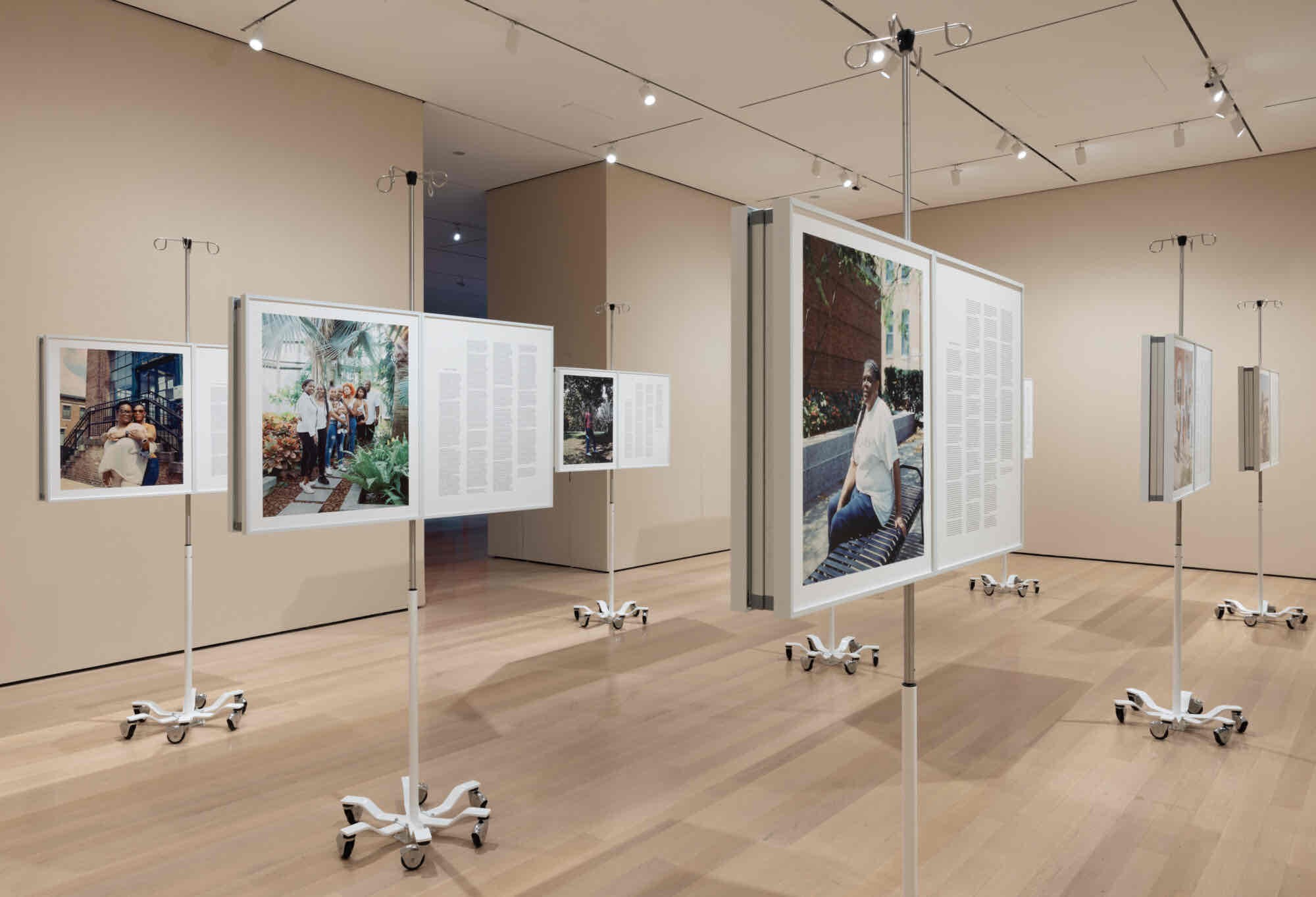
Installation view of LaToya Ruby Frazier: Monuments of Solidarity, on view at The Museum of Modern Art, New York from May 12 through September 7, 2024. Photo: Jonathan Dorado.

Installation view of LaToya Ruby Frazier: Monuments of Solidarity, on view at The Museum of Modern Art, New York from May 12 through September 7, 2024. Photo: Jonathan Dorado.
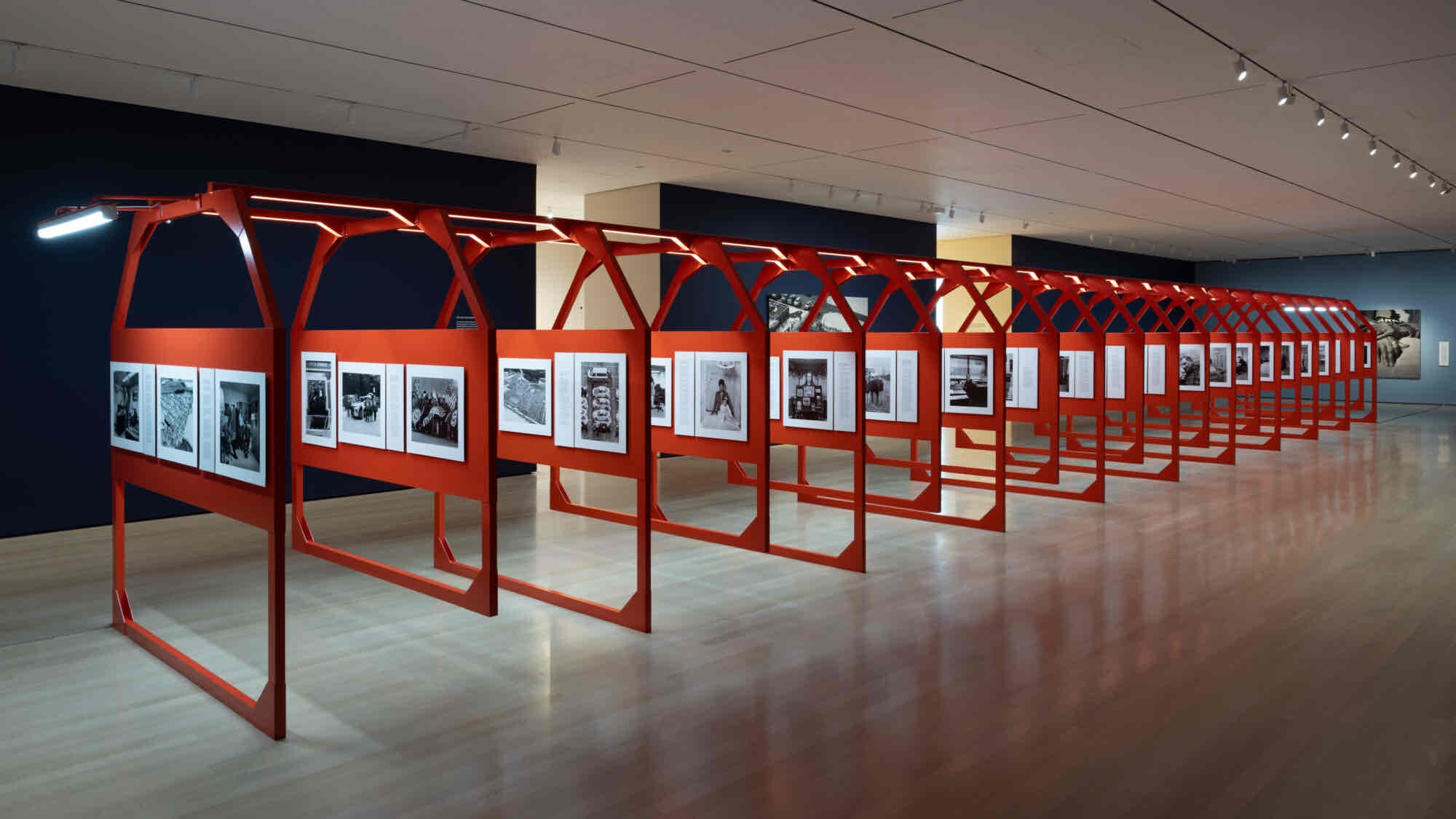
Installation view of LaToya Ruby Frazier: Monuments of Solidarity, on view at The Museum of Modern Art, New York from May 12 through September 7, 2024. Photo: Jonathan Dorado.
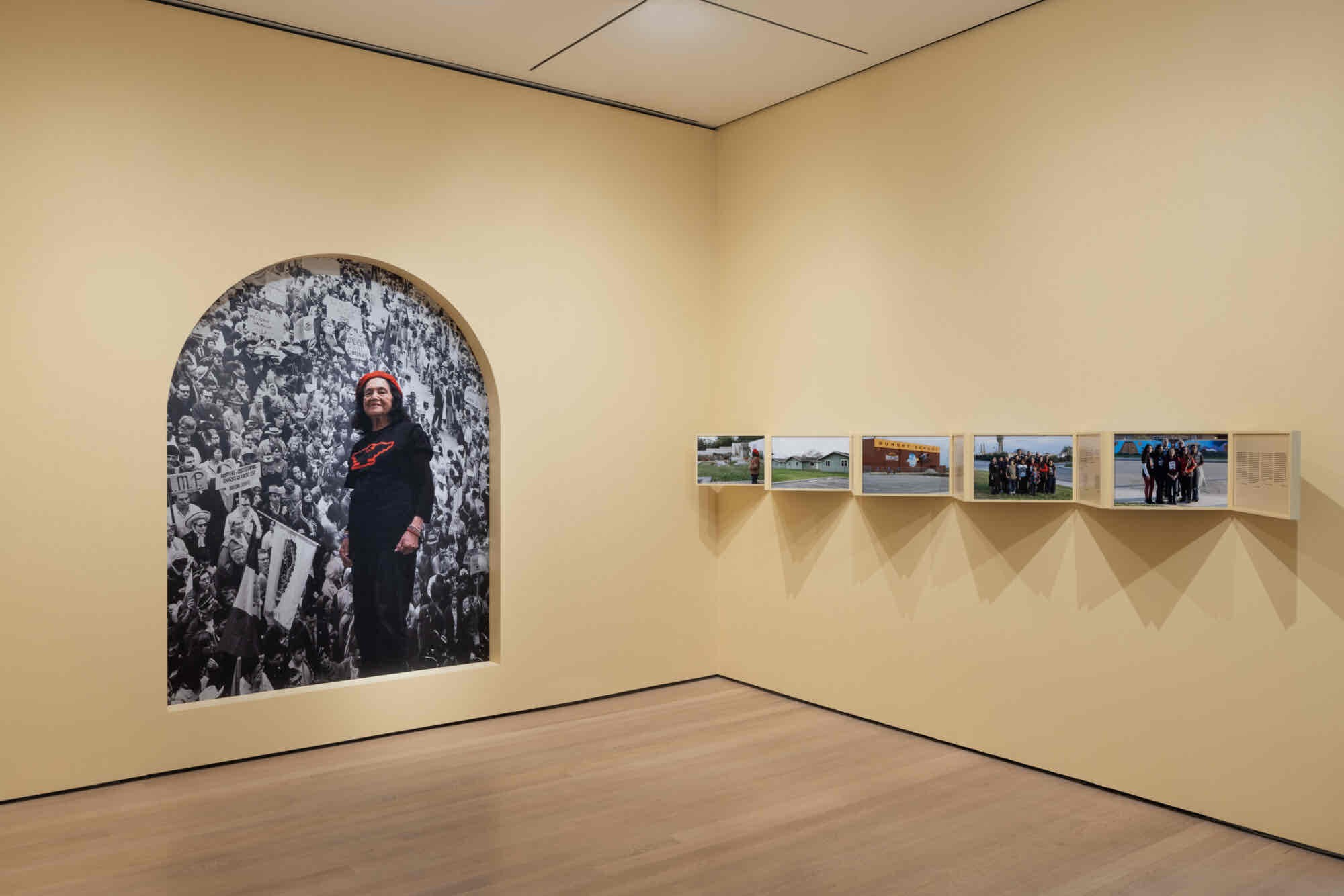
Installation view of LaToya Ruby Frazier: Monuments of Solidarity, on view at The Museum of Modern Art, New York from May 12 through September 7, 2024. Photo: Jonathan Dorado.
The Museum of Modern Art presents LaToya Ruby Frazier: Monuments of Solidarity, the first museum survey dedicated to the artist-activist, on view at MoMA from May 12 through September 7, 2024. For more than two decades, Frazier has used photography, text, moving images, and performance to revive and preserve forgotten narratives of labor, gender, and race in the postindustrial era. Bringing together work from 2001 to 2024, this exhibition highlights the full range of Frazier’s practice to date and includes several rarely- and never-before-seen works. LaToya Ruby Frazier: Monuments of Solidarity is organized by Roxana Marcoci, The David Dechman Senior Curator and Acting Chief Curator, with Caitlin Ryan, Assistant Curator and Antoinette Roberts, former Curatorial Assistant, Department of Photography.
Born in 1982 in the steel town of Braddock, Pennsylvania, Frazier has cultivated a practice that critically builds on the legacy of the social documentary tradition of the 1930s, the photo-conceptual forays of the 1960s and 1970s, and the work of socially conscious writers like Upton Sinclair, James Baldwin, and bell hooks. Frazier’s work sheds light on pressing social and political issues, including those spurred by industrialization and deindustrialization, racial and environmental injustice, gender disparities, unequal access to healthcare and potable water, and the erosion or denial of fundamental human rights.
“As a form of Black feminist world-building, these nontraditional monuments demand recognition of the crucial role that women and people of color have played and continue to play within histories of labor and the working class, of who and what is worth celebrating,” said Marcoci.
“For this reason, it is incumbent upon me to resist—one photograph at a time, one photo essay at a time, one body of work at a time, one book at a time, one workers’ monument at a time—historical erasure and historical amnesia,” Frazier pointed out.
For the MoMA exhibition, Frazier has reimagined several of her diverse bodies of work as a sequence of original installations that she calls “monuments for workers’ thoughts.” Frazier’s earliest body of work, The Notion of Family (2001–14), highlights the politics of care practiced by Black women, exploring the relationships among Frazier, her mother, and her grandmother as well as the connections between the family and the town of Braddock, PA—a suburb of Pittsburgh that developed around the Edgar Thomson Steel Works. At MoMA, the photographs from this body of work will be installed alongside three silent videos featuring the artist and her mother, projected onto hanging screens that punctuate the space. A poem by Frazier, silkscreened on a wall, lists the toxins found in Braddock’s air. Together these elements create a monument to Black women and the worlds they construct as they care for one another.
Flint Is Family in Three Acts (2016–20) tells the story of the water crisis in the predominantly Black city of Flint, Michigan—one of the most devastating cases of environmental racism in US history—through the experiences of resident Shea S. Cobb, her mother, Reneé, her daughter, Zion, and her best friend, Amber N. Hasan. A video on view at MoMA combines a sequence of Frazier’s Act I photographs with Cobb’s performance of “No Filter,” a poem she wrote as a response to Michigan politicians and the media’s portrayal of the crisis. Act II comprises photographs that document the “reverse migration” of Cobb and her daughter, Zion, from the urban North to rural Mississippi, where they temporarily moved to live with Cobb’s father. The nine photograph-and-text panels from Act III, displayed on steel stands arranged in an Army Ranger tactical troop formation, illustrate the grassroots initiative to bring clean drinking water to the community.
On the Making of Steel Genesis: Sandra Gould Ford (2017) is a collaboration between Frazier and the artist, writer, and advocate Sandra Gould Ford. In the mid-1980s, Ford worked at the Jones and Laughlin Steel Company, one of the largest employers in the Pittsburgh area, as a clerk and secretary. Amid mass layoffs, Ford photographed the plant and saved documents such as blueprints and incident reports, building an invaluable archive, which forms parts of this body of work. On one side of a freestanding wall in the MoMA installation hangs Frazier’s portrait Sandra Gould Ford in Her Office in Homewood, PA, printed at a monumental scale. On the indigo walls of the elliptical gallery—a shape recalling a planetarium (a homage to Ford’s lifelong interest in astronomy) and a color evoking architectural blueprints—are a selection of Ford’s photographs from her time at Jones and Laughlin alongside cyanotype reproductions by Frazier of company documents from Ford’s archive. In an audio voiceover that plays in the gallery, Ford outlines her ecofeminist philosophy of steel production.
The exhibition will also feature two celebrated installations by Frazier and one brand-new work. More Than Conquerors: A Monument for Community Health Workers of Baltimore, Maryland (2022), made in the wake of the COVID-19 pandemic, was awarded the Carnegie Prize at the 58th Carnegie International in Pittsburgh. The Last Cruze (2019), a work in MoMA’s collection that will be on view in New York for the first time, recounts the activities of United Auto Workers union members facing the closure of an auto plant in Lordstown, Ohio.
A never-before-shown monument—A Pilgrimage to Dolores Huerta: The Forty Acres, Arvin Migratory Labor Camp, Nuestra Señora Reina de la Paz, Dolores Huerta Peace and Justice Cultural Center (2023–24) —will celebrate the achievements of workers’ rights activist Dolores Huerta and her legacy as a union leader and a mother. Centered on an eight-foottall portrait of Huerta, the work honors a woman who has been obscured by better-known male figures in US labor histories.
Installed in the passageway between the exhibition’s entrance and exit is A Human Right to Passage (2014), a monument to migrants who have crossed and continue to cross borders with great difficulty and at extreme risk. Performing on Manhattan’s disused Pier 54, where ocean liners once docked, Frazier brandished flags printed with archival photographs that recall the harbor’s role in policing the United States’ borders. The pictures are paired with a new sound piece in which Frazier performs, on guitar, American activist Ralph Chaplin’s 1915 song “Solidarity Forever”—an anthem for labor movements throughout the world.
LaToya Ruby Frazier: Monuments of Solidarity is organized by Roxana Marcoci, The David Dechman Senior Curator and Acting Chief Curator, with Caitlin Ryan, Assistant Curator and Antoinette D. Roberts, former Curatorial Assistant, Department of Photography.
Born in 1982 in the steel town of Braddock, Pennsylvania, Frazier has cultivated a practice that critically builds on the legacy of the social documentary tradition of the 1930s, the photo-conceptual forays of the 1960s and 1970s, and the work of socially conscious writers like Upton Sinclair, James Baldwin, and bell hooks. Frazier’s work sheds light on pressing social and political issues, including those spurred by industrialization and deindustrialization, racial and environmental injustice, gender disparities, unequal access to healthcare and potable water, and the erosion or denial of fundamental human rights.
“As a form of Black feminist world-building, these nontraditional monuments demand recognition of the crucial role that women and people of color have played and continue to play within histories of labor and the working class, of who and what is worth celebrating,” said Marcoci.
“For this reason, it is incumbent upon me to resist—one photograph at a time, one photo essay at a time, one body of work at a time, one book at a time, one workers’ monument at a time—historical erasure and historical amnesia,” Frazier pointed out.
For the MoMA exhibition, Frazier has reimagined several of her diverse bodies of work as a sequence of original installations that she calls “monuments for workers’ thoughts.” Frazier’s earliest body of work, The Notion of Family (2001–14), highlights the politics of care practiced by Black women, exploring the relationships among Frazier, her mother, and her grandmother as well as the connections between the family and the town of Braddock, PA—a suburb of Pittsburgh that developed around the Edgar Thomson Steel Works. At MoMA, the photographs from this body of work will be installed alongside three silent videos featuring the artist and her mother, projected onto hanging screens that punctuate the space. A poem by Frazier, silkscreened on a wall, lists the toxins found in Braddock’s air. Together these elements create a monument to Black women and the worlds they construct as they care for one another.
Flint Is Family in Three Acts (2016–20) tells the story of the water crisis in the predominantly Black city of Flint, Michigan—one of the most devastating cases of environmental racism in US history—through the experiences of resident Shea S. Cobb, her mother, Reneé, her daughter, Zion, and her best friend, Amber N. Hasan. A video on view at MoMA combines a sequence of Frazier’s Act I photographs with Cobb’s performance of “No Filter,” a poem she wrote as a response to Michigan politicians and the media’s portrayal of the crisis. Act II comprises photographs that document the “reverse migration” of Cobb and her daughter, Zion, from the urban North to rural Mississippi, where they temporarily moved to live with Cobb’s father. The nine photograph-and-text panels from Act III, displayed on steel stands arranged in an Army Ranger tactical troop formation, illustrate the grassroots initiative to bring clean drinking water to the community.
On the Making of Steel Genesis: Sandra Gould Ford (2017) is a collaboration between Frazier and the artist, writer, and advocate Sandra Gould Ford. In the mid-1980s, Ford worked at the Jones and Laughlin Steel Company, one of the largest employers in the Pittsburgh area, as a clerk and secretary. Amid mass layoffs, Ford photographed the plant and saved documents such as blueprints and incident reports, building an invaluable archive, which forms parts of this body of work. On one side of a freestanding wall in the MoMA installation hangs Frazier’s portrait Sandra Gould Ford in Her Office in Homewood, PA, printed at a monumental scale. On the indigo walls of the elliptical gallery—a shape recalling a planetarium (a homage to Ford’s lifelong interest in astronomy) and a color evoking architectural blueprints—are a selection of Ford’s photographs from her time at Jones and Laughlin alongside cyanotype reproductions by Frazier of company documents from Ford’s archive. In an audio voiceover that plays in the gallery, Ford outlines her ecofeminist philosophy of steel production.
The exhibition will also feature two celebrated installations by Frazier and one brand-new work. More Than Conquerors: A Monument for Community Health Workers of Baltimore, Maryland (2022), made in the wake of the COVID-19 pandemic, was awarded the Carnegie Prize at the 58th Carnegie International in Pittsburgh. The Last Cruze (2019), a work in MoMA’s collection that will be on view in New York for the first time, recounts the activities of United Auto Workers union members facing the closure of an auto plant in Lordstown, Ohio.
A never-before-shown monument—A Pilgrimage to Dolores Huerta: The Forty Acres, Arvin Migratory Labor Camp, Nuestra Señora Reina de la Paz, Dolores Huerta Peace and Justice Cultural Center (2023–24) —will celebrate the achievements of workers’ rights activist Dolores Huerta and her legacy as a union leader and a mother. Centered on an eight-foottall portrait of Huerta, the work honors a woman who has been obscured by better-known male figures in US labor histories.
Installed in the passageway between the exhibition’s entrance and exit is A Human Right to Passage (2014), a monument to migrants who have crossed and continue to cross borders with great difficulty and at extreme risk. Performing on Manhattan’s disused Pier 54, where ocean liners once docked, Frazier brandished flags printed with archival photographs that recall the harbor’s role in policing the United States’ borders. The pictures are paired with a new sound piece in which Frazier performs, on guitar, American activist Ralph Chaplin’s 1915 song “Solidarity Forever”—an anthem for labor movements throughout the world.
LaToya Ruby Frazier: Monuments of Solidarity is organized by Roxana Marcoci, The David Dechman Senior Curator and Acting Chief Curator, with Caitlin Ryan, Assistant Curator and Antoinette D. Roberts, former Curatorial Assistant, Department of Photography.
